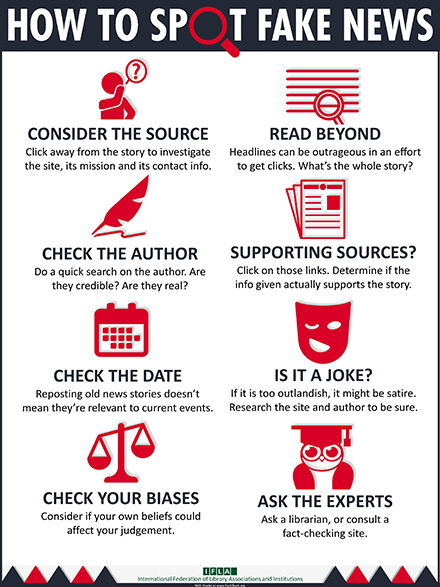How to do it:
Spotting Fake News
Not all fake news is the same. To learn more about the types (misinformation, disinformation and malinformation), how to spot them, and verification sources, try this simple guide from the CUNY library. We’ll add that illustration with AI makes the odds of fake news higher. Credible sources are largely avoiding AI until ethical debates can be resolved.
Debunking Lies
There are a few solid tactics for addressing lies when you find them. Here are some quick-tips:
- don’t share the link (it only rewards them.)
- Instead, take a screenshot, and use editing tools to put a big red X over it. Visual information is the strongest memory, so this is critical to prevent people from absorbing the lie.
- Use a “truth sandwich” when talking about a lie. People remember key words, and the first or last thing they hear. Do not say: “Democrats are NOT responsible for the shutdown.” Instead say the truth, then the lie, then the truth again: “Republicans can pass a budget with a straight majority any time they want, just like they’re appointing judges that way. They are responsible for the shutdown, not Democrats. Republicans can end the government shutdown any time they want.” Our focus stays on the truth thing we want people to remember, while quickly debunking the lie.

If you share something fake (an author shared the Seahawk story pictured) it’s okay! We all do sometimes. Just admit it and fix it. If the post has very few interactions, take a screenshot, mark it up, and make a new post explaining why it’s false. Then remove the false post to avoid spreading or rewarding fakes. If the post has a lot of interactions before you notice, EDIT the original post by placing a note at the very top acknowledging it’s fake information, and add a comment saying the same. (People who commented will be notified by the latter.)





